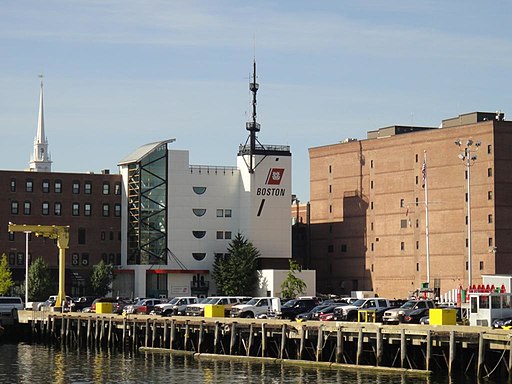The History Of The Boston Waterfront

North Boston: Continuously inhabited since the 1630s, the North End area is the sum of its historical influences. There are centuries’ worth of history packed into an area of just 0.36 square miles. Twelve wharves, including Battery and Commercial Wharves, extend southward from the Coast Guard Support Center. There are twelve sites listed on the National Register of Historic Places on this tiny patch of land. As far back as 1647, the North End has been acknowledged as a distinct neighborhood.
Through the American Revolution and any number of other impactful episodes, the migration of people from Italy, Ireland, Portugal, Italy; Catholics, Eastern-European Jews, Protestants--all arrived to become new Americans. Among their numbers, there were artisans, journeymen, laborers, servants, and slaves; all contributed to the innumerable influences on commerce and education, customs, and politics; truly, the North End waterfront has always been that mythical Great American Melting-pot.
The Boston Waterfront has a long history of social and political unrest with riots and uprisings, angry mobs, and tensions between religious and ethnic groups. An influx of sailors and merchants from around the world led to the 19th-century evolution of a red-light district on Ann Street, now North Street. The Boston police were known to conduct raids on houses of ill repute throughout the area. The North End waterfront survived a cholera epidemic in the 19th century and the Spanish Flu Pandemic in the early 20th century. A 2.3 million gallon flood of molasses in 1919 killed 21 people and injured 150. The clean-up involved millions of gallons of seawater, which left Boston Harbor brown for months.
Faneuil Hall, the Cradle of Liberty and origin of “No taxation without representation,” is one of four markets connected by a cobblestone plaza. Now populated by performance artists and shops, its history reaches back to 1742 when it was built by merchant Peter Faneuil and gifted to the city. It served as a farmers’ market where citizens bought much of their food.
Notable orators have spoken at Faneuil Hall: Sam Adams, Susan B. Anthony, Oliver Wendell Holmes, and in modern times Bill Clinton.
The world famous Prince Macaroni Company was established here by three Italian immigrants. The neighborhood hosted funeral services for Sacco and Vanzetti. The advent of 20th century industrial revolution brought dramatic changes to the landscape and surface roads with the demolition of parts of the neighborhood to make way for the construction of tunnels, expressways, and an airport.
Social service agencies such as the North End Mission and the Home For Little Wanderers started to emerge to assist impoverished North End citizens with education, employment, Sunday school, and other services. Orphans, foundlings, and surrendered children from the area, as well as those left alone by the Civil War, were taken into these “waystations” and moved into the Orphan Train system where they were sent to the midwest states and chosen by adoptive parents.
South Boston: Locally known as Southie, this former farmland was annexed to Boston in the early 19th century, along with the American Revolution site of Dorchester. From Dorchester, George Washington routed the Redcoats-- British soldiers-- who left for Nova Scotia. Castle Island was a fortification site from 1634; the current granite structure, Fort Independence, dates back to the American Civil War and is now within a 22-acre recreation area.
By the end of the 1700s, Long Wharf in South Boston was pre-eminent among Boston’s 80 wharves. Rich with history, this was the hub of commerce and transportation from 1707. Southie has long been central to the fishing industry. The Boston Fish Pier was built in the early 20th century and is still in use today. In the last decade, South Boston has been completely redeveloped and is now booming economically.

